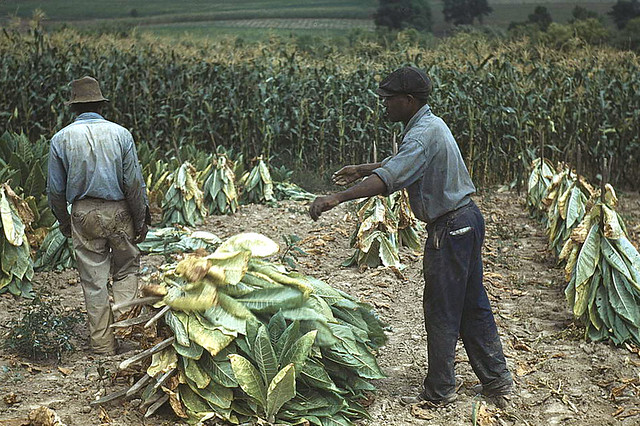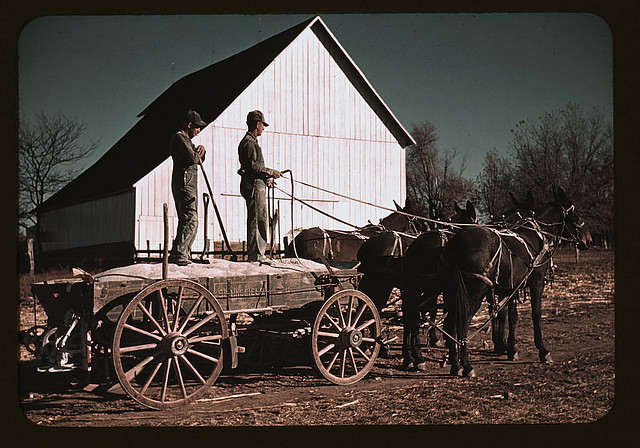If you missed the series introduction, you can read it here.

Tobacco is an elemental part of American history. Within five years of the founding of the colony at Jamestown, Virginia, the first white settlers were growing tobacco as a cash crop, and it was the economic foundation for how they survived. George Washington grew and sold tobacco. Or to be more precise, the workers in his fields grew tobacco. And thus it has ever been through the whole winding course of American history: slaves, migrants, poor dirt farmers, small-plot landowners, and others have worked the fields to grow this plant and turn it into money. This picture depicts a sight you can see anywhere tobacco is grown: tobacco farmers and workers taking advantage of any available ground — a small patch adjacent to a healthy stand of corn, as is shown here, or untillable land on an awkward rocky slope — and working it to yield this sturdy, reliable cash crop. Here, you see the oversized, beautiful, fragrant tobacco leaves, so full of the promise of cash. And so full of illness.





